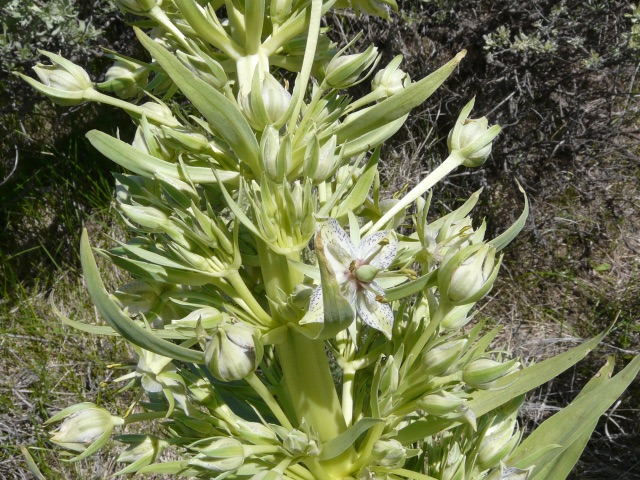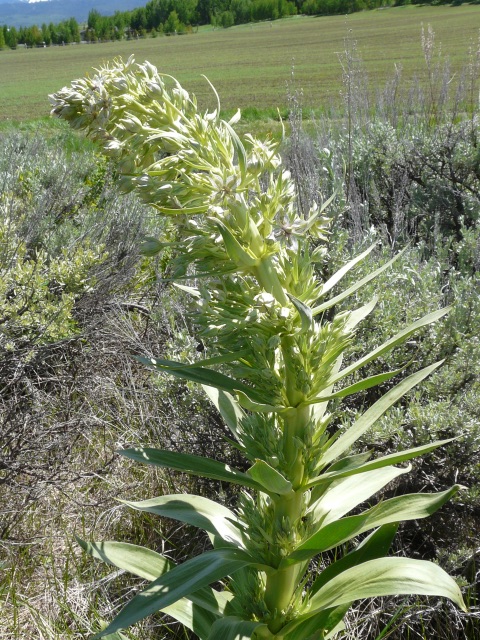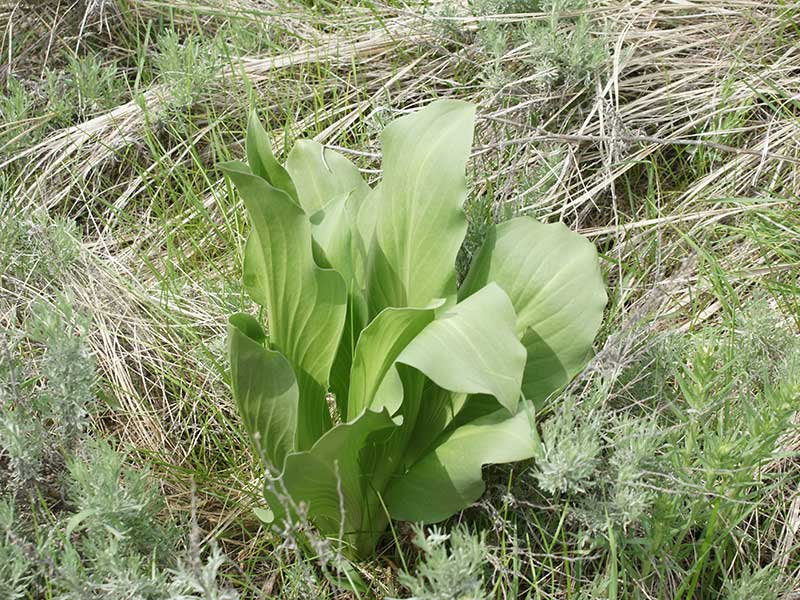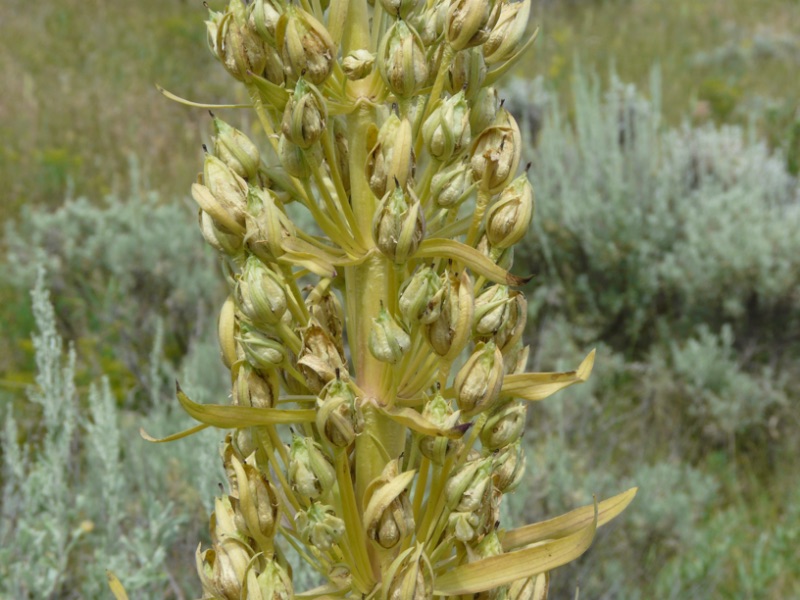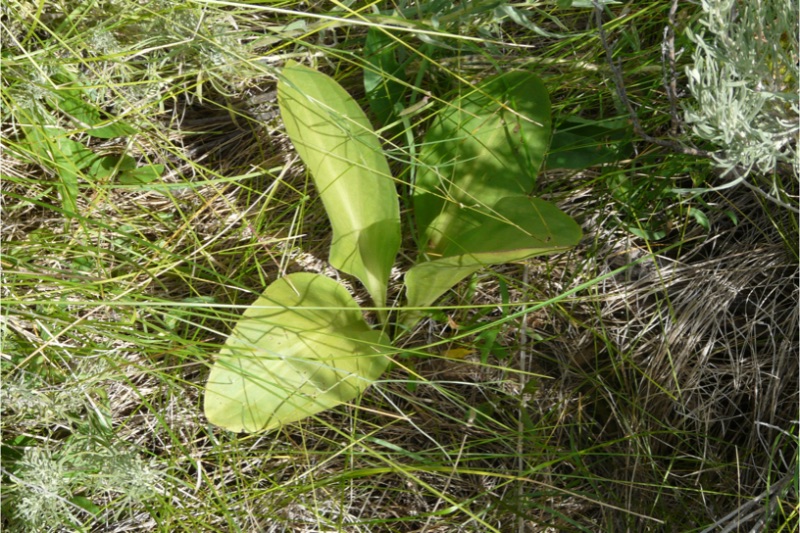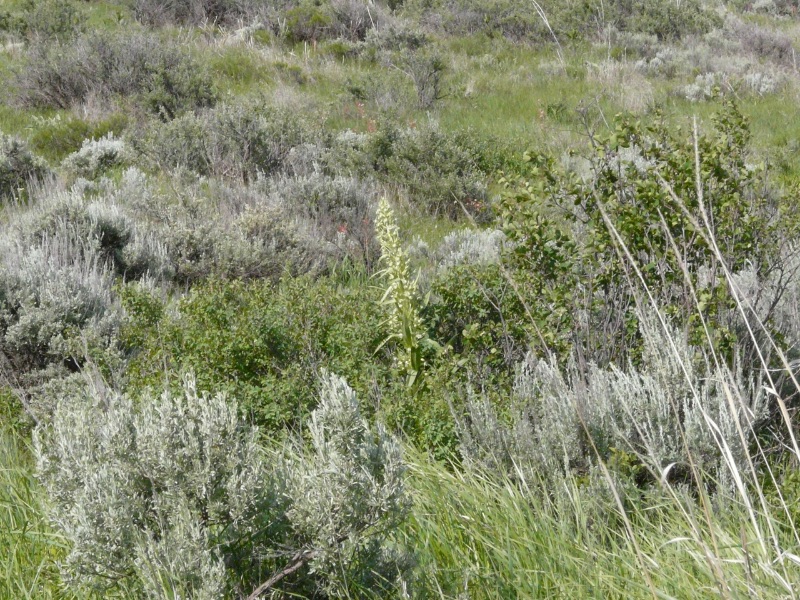Frasera speciosa / monument plant
- striking, 4 petal flowers – green and white with purple flecks
- flowers held close in to stem
- tall flowering stalk (to chest high) from a base of large, elongated rosette leaves
Synonym: Swertia radiata
Also known as: Elk weed, deer’s ears, green gentian, giant frasera
This is a truly unique, showy plant, possibly confusable at a distance and at first glance with false hellebore (Veratrum californicum). In 2019, it was flowering before the last snows and frosts in early June (and the flowers didn’t tolerate the cold well). For the rest of the summer – and possibly for several years – the monuments are visible throughout the area as they first go from green to brown (by early August) and the fruits mature and drop the seeds and then simply hang around without falling over and decaying (but they are dead).
Overall, Frasera speciosa is found on undisturbed sites.
Cool botanical bits:
F. speciosa is highly visible, beginning early in the season… if it flowers. It is, however, perennial (living up to 60 years) but monocarpic, meaning it flowers only once, sets seed and dies. Even weirder (when you think about life styles), flowering tends to be synchronized, i.e. all the plants in an area will flower in the same year (e.g. 2019). This kind of mass reproductive event (a.k.a. masting) makes for really dramatic shows on hill sides. How/why this happens is not clear, but it may be related to moisture… mast flowering events are hard to study.
In some areas of Colorado, these events seem to be at 4 year intervals. It isn’t known what the interval might be in the Valley. It seems clear, however, that the phenology of the progeny is not determined by the way the parent acted. This means that genetic variation within a population of monument plants can be easily maintained.
F. speciosa also engages in a kind of “maternal care”. Seeds which land in, and germinate in the decaying stalk debris on the ground have a higher survival rate, lower water stress, and an overall better chance than seeds which land further away from the mother plant.
| Family | |
|---|---|
| Color | |
| Blossom size | |
| Inflorescence size | |
| When? | |
| Where? |
